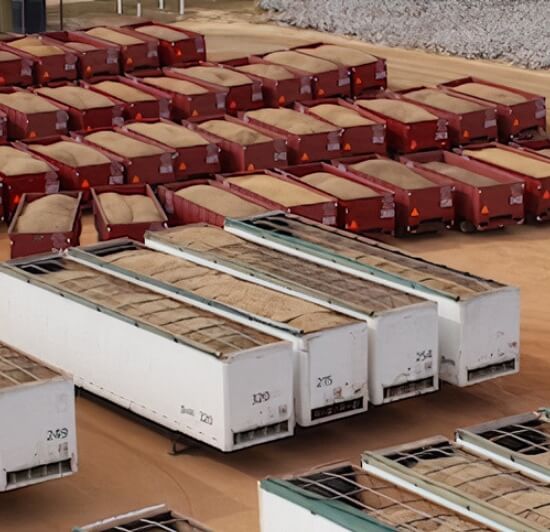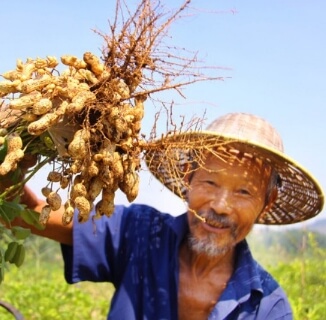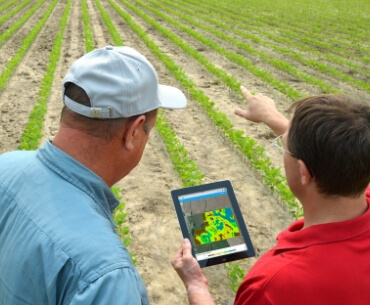



Agrofoods image caption
Direct, integrated, and sustainable sourcing
Our procurement strategy maximises returns for farmers and protects the sustainability of our supply.

With a direct, integrated procurement model, we stay competitive on price while making sure farmers are properly remunerated. Our standardised processes focus on traceability and control.

There are over 27 million hectares of peanut fields worldwide, with diverse seasonal and crop variations. Our experienced procurement team knows exactly where to go – and when – for uninterrupted supply

Our sustainable sourcing investments improve processing standards industry-wide. As part of our commitment to Fairtrade, we share our technical expertise with partner shellers.

We supply seeds to help farmers maximise their germination and yield. Plus, our farm-tech support and post-harvest management systems protect supply and minimise wastage.
Agrofoods global image caption
(1).jpg)
Procurement pioneers
Partnership is behind everything we do. By empowering farmers, shellers and industry stakeholders, we rise together.
We follow three basic principles:
We source locally, and ship globally. With an upstream sourcing team that procures cross-country for our international processing centers.
When it comes to peanut purchasing, we’re major players. So we draw on our origin expertise to add value, making the most of our high-volume operations.
We buy peanuts all year round, protecting a quality supply that doesn’t stop for trends.
Each species of peanut has unique nutritional and chemical characteristics. We help manufacturers select the perfect one.
Our experience in global sourcing helps manufacturers like you find a peanut species and type to match your needs.
Peanuts vary in size, colour, protein content, sugar level, oleic acid ratio and more. Luhua varieties are for example the best for confectionery use, thanks to large seeds, high protein and sugar levels, and a high oleic acid ratio. Whatever your needs, let us help you choose.
.jpg)
The ‘Zhenzhuhei’ black King Kong’s cyanidin and anthocyanin levels are 100 times higher than commercial varieties,affecting their colour and helping immune responses and cancer prevention.
We carefully balance volume and value to source affordable, quality peanuts.
We select the best origin based on chemical composition, physical appearance, and economic value.
Origin is key – for example, the American runner peanut has a lower fat content and a different flavour profile compared with its Indian equivalent. Similarly, the Spanish Western 44 from South India roasts better than the Spanish java peanut from South Africa, due to lower peroxide values.
95% of global peanuts are produced by small-scale farmers, making consistency a challenge.
We draw on local knowledge and satellite technology to assess the crop cycle of even the smallest land parcel.
Our on-field network helps us identify changes in peanut growing patterns so we can assimilate different crops. With detailed insights, we can ensure effective global procurement.

High-frequency satellite imagery provides broad field coverage, helping us track productivity and advise growers.
In such a widespread market with perennial crops, accurate data is the key to critical decision-making
We draw on our local presence and historical crop information such as yield, water utilization, weather patterns, and crop rotations.
Our detailed growing information allows our procurement team to better understand what to expect from each crop.
.jpg)
Peanut monoculture decreases yield by up to 25%, whereas rotating with cotton or corn production can increase yield by up to 23%
Our procurement process is built around traceability. We track, trace and measure every step of production.
As peanut specialists, we don’t just track crops, but also social and economic changes that might impact production, procurement ,or manufacturing.
Everything we produce can be traced back to the field, helping to inform future decision-making. Plus, you’ll know exactly where your produce came from, and every journey it took
.jpg)
Effective tracing helps us develop precise aflatoxin risk maps, charting where and when it most commonly occurs. As the climate changes, we predict shifting mycotoxin patterns and take precautionary measures.
